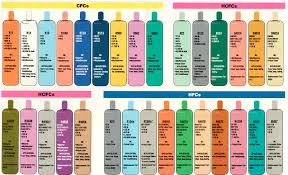ASHRAE publish new refrigerant standards
USA – The American Society of Heating, Refrigerating and Air-Conditioning Engineers (ASHRAE) have just published the latest 2016 editions of their major refrigerants-related standards as part of a package with 30 new refrigerants and refrigerant blends added to last year’s guide.
ANSI/ASHRAE 15, which is the Safety Standard for Refrigeration Systems, and its sister standard, ANSI/ASHRAE 34, covering the Designation and Safety Classification of Refrigerants, constitute a complete set of requirements for the safe design, construction and application of refrigeration systems used in a wide variety of residential, commercial and industrial applications.
For both of the standards, the updates are the result of an ongoing stream of changes made based on new science and research, experiments, as well as proposals from designers, manufacturers and users.
The 2016 edition of Standard 15 incorporates addenda a, b, c, e and g to the previous existing Standard 15-2013, the addenda therefore enshrine the following changes:
- Incorporated changes to ensure improvement in the safe design, construction, installation and operation of refrigeration systems
- Updated the requirements for safety relief systems, including revisions to relief vent pipe discharge locations as well as design provisions for headered relief vent systems
- Updated the design pressure requirements applicable to all carbon dioxide-based systems
- Modified the extreme pressure protection for heat exchangers and pressure limiting devices for positive displacement compressors
The 2016 edition of Standard 34 also incorporates 35 addenda to the pre-existing 2013 edition of the standard. Among the key changes imposed on the 2016 edition pf Standard 34 are the following:
- Added three new refrigerants and 27 new refrigerant blends
- Changed the source of the WEEL (Workplace Environmental Exposure Levels) values from AIHA (American Industrial Hygiene Association) to TERA OARS-WEEL (Toxicology Excellence for Risk Assessment/Occupational Alliance for Risk Science)
- Changed the requirements for the refrigerant application process
- Changed the requirement for submission of standard test result data to validate the method used to determine burning velocity
- Changed the units required for refrigerant designation to necessitate the submission of dual units
- Revised R-744 toxicity data for the RCL, LC 50, cardiac sensitization NOEL, anesthesia NOEL, ATEL, RCL and ATEL source















